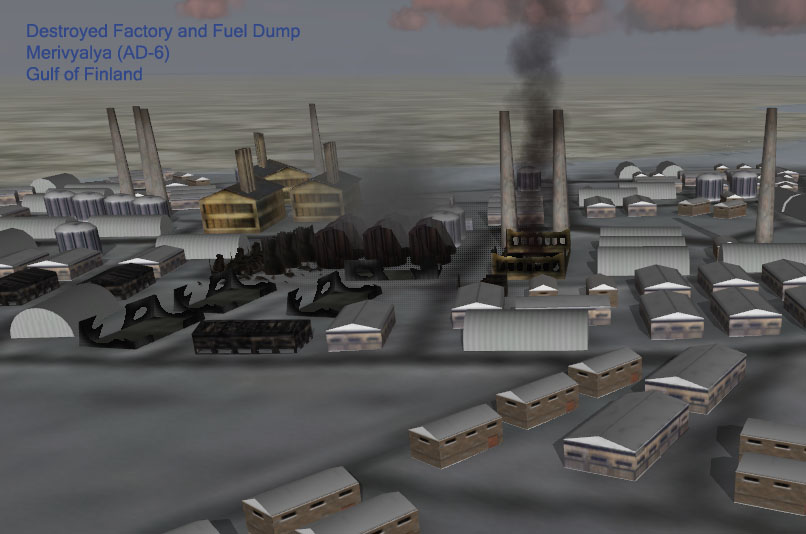Hi fhechene.
Thanks for your post. Wheelsup_cavu got it almost right.Your question is about persistent environmental damage in IL-2 missions, i.e. if you destroy a building in one mission can SEOW ensure that that building appears as destroyed in the following mission? The short answer is definitely yes, with some caveats.
The long answer relies on some knowledge of IL-2 map damage tiles. In standard IL-2 maps there are usually "urban" areas containing buildings. Examples are villages, towns, cities and some other areas. When you open such a map in FMB you will see that there is a damage slider which can colour "tiles" in these areas. Damage tiles are 200x200 m squares and you can adjust the damage level per tile. If you then save a mission file, the damage state of the tile will be written to the mission file. This provides a mechanism for SEOW to control the damage state of urban tiles based on combat actions. All SEOW has to know is the code that identifies a particular damage tile on any supported map and the damage code that signifies that tile's damage level. Thankfully, a very talented guy called RAF74_Taipan cracked these codes about 20 years ago by laborious reverse engineering. All the data that supports this functionality is in the standard SEOW database, and the code that drives it is in the SEDCS application. This feature has been fully supported for at least 15 years, and is all open source.
So how does SEOW use this "environmental damage" feature? Consider a campaign running in a fresh map. There are factory districts, cities, villages etc. Ground and air combat is taking place. SEOW can optionally place target objects inside factory buildings and large fuel tanks. If any of these target objects are destroyed in a mission, then the associated factory building or fuel tank is deemed to be destroyed. SEOW then works out which damage tile contained the destroyed object and marks that tile to be destroyed in the next and subsequent missions. That covers the general appearance of damage over the entire tile, including all co-located buildings and structures. SEOW also places smoke plumes at the target object location for a mission or two, so battle damage is clearly apparent from distance in the subsequent missions. Environmental damage optionally times out, according to campaign settings managed by the SEDCS.
Furthermore, any combat kills like crashed aircraft, destroyed vehicles, destroyed bridges are also tracked by SEOW and represented by destroyed objects and smoke plumes. Any co-located damage tiles are automatically logged and their damage states managed by the SEDCS. Depending on choices by the campaign admin, you can see that an active SEOW battlefield will accumulate many battle wrecks, downed bridges and ravaged urban areas as the campaign progresses. Methods of environmental and structural repair are chosen by the campaign designer - they can be automated or left to commanders to manage. We have played many campaigns where (over time) destroyed towns, bridges and rural areas were strewn with literally hundreds of destroyed aircraft and vehicles, mapping out where battles were fought, and providing useful landmarks for following operations. Check out
https://seowhq.net/seowwiki-en/index9a4 ... ic_Bombing, and here is an image from the Wiki showing tile damage and smoke plumes the mission after a bombing raid:

What are the caveats? Primarily, if no damage tile exists in a particular part of the map, then no environmental damage can be programmed there. This is not a deficiency of SEOW, rather it all depends on how many damage tiles are defined in each map by the map creator. Remember, SEOW is not a mod of IL-2 or HSFX, it is simply an add-on piece of code. I promised that to Oleg long ago and we haven't changed that approach. SEOW works fine with vanilla Il-2 FB 1946. You can also run it in HSFX-compliant mode with a click of a button if you desire. You can even include first-person shooter support with ArmA2 Iron Front, fully integrated with the SEOW campaign engine, at the click of a button.
If you want persistent battlefield environments, then SEOW gives you that in spades.
Cheers,
4Shades
